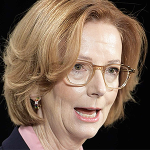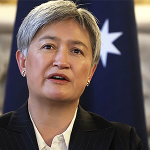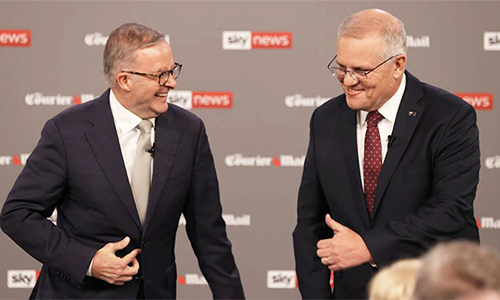As the Bank of England’s Monetary Policy Committee (MPC) announces its interest rate decision today it has the chance to reverse the damage caused by its interest rate hikes. Rates have been fixed at 5.25 per cent since last August and the Bank has stubbornly refused to cut them. We’re all paying the price.
Those final rate rises were clearly an error
The truth is that inflation is lower and has fallen much faster than the Bank used as its justification for raising rates. In August, the Bank’s model indicated that, even with interest rates raised to 5.25 per cent, inflation would be 5 per cent last year. It was actually 4 per cent. As late as November last year, the Bank forecast that it would be the end of 2025 before inflation returned to 2 per cent. It is now widely expected that will happen much earlier than the Bank forecast.
Those final rate rises were clearly an error. So the least one might expect the Bank to have done by now is to reverse the rises. Yet that has not happened. Rates have been left unchanged since last August. Indeed, it is not even certain, by any means, that the Bank will cut rates today – even though inflation is already falling.
What could explain this caution about rate cuts? The most obvious interpretation is that the Bank is being wary about risking cutting rates too early because it is widely regarded as having got things wrong when rates were rising. It did not predict the large inflation rise in 2022; it waited too long to start hiking rates as inflation took off, and it raised rates too slowly once it properly got going.
It is understandable that the Bank is now overcompensating by being extra cautious about lowering rates too soon in case inflation persists or rises again. It is natural not to want to make the same mistake twice. It is also understandable that, given that the Bank’s models failed to predict inflation going so high, there might be a concern that future projections for inflation are likewise under-predicting its levels. The Bank recently commissioned Ben Bernanke, former chairman of the Federal Reserve, to review its forecasting models and he identified several weaknesses that are presumably in the process of being remedied.
There is, however, no deep mystery as to why inflation rose or why it is now falling. Part of the rise was, of course, a consequence of sudden energy price rises, especially those associated with the Russian invasion of Ukraine. But most of the rise resulted from one of the longest-established principles in all economics: if the money supply rises rapidly, then inflation will be higher.
The relationship between the money supply and inflation is complex. Changes in the amount of money circulating in the economy do impact inflation, but the precise timing and magnitude of this effect can vary. This makes it challenging for central banks to precisely control inflation (to the nearest few decimal points) by adjusting the money supply, such as through Quantitative Easing (‘printing money’). In fact, small deviations from trend growth in the money supply might not affect inflation at all if inflation expectations remain stable and the economy can absorb the extra money without prices rising.
Further complicating matters, if a central bank tries to target a specific measure of money supply growth, people may change their behaviour in ways that make that measure less meaningful. For example, they might start using, effectively as money, forms of money and credit that aren’t captured by the targeted measure. In the 1970s and 1980s this frustrated some monetarist economists who thought central banks could fine-tune the economy by controlling one or other particular measure of the money supply. In practice, the money supply has proven difficult to precisely define and control.
Yet, for all that, the big picture remains: annual growth in broad money, over time, of around 5 per cent (or perhaps a little below) has been consistent with the UK’s 2 per cent inflation target. If the Bank induces the money supply to grow much faster than that – the 15 per cent money supply growth in early 2021, for example – then it should be expected that, with a lag of perhaps 18 months to three years, inflation will go far above target, probably into double figures – as indeed happened in late 2022. If the Bank induces the money supply to contract, or to grow much more slowly than 5 per cent, inflation will – again after a lag – be below target. And if the contraction becomes large enough and sustained enough, there may even be deflation.
Broad money contracted from late 2022 to late 2023, and for much of the rest of the period since late 2022, growth has been far below 5 per cent. So it should be no surprise if inflation is below target, and we should expect that below-target inflation will persist for some time.
Instead of attempting to over-correct for past errors, the Bank should heed the monetary signals and respond by immediately cutting rates. The Institute of Economic Affairs’ Shadow Monetary Policy Committee, which I have the honour of chairing, has recommended an immediate cut of 0.5 per cent. The inclusion of experts on monetary economics in the MPC would bring much-needed intellectual diversity to a committee that has been lacking in it recent years. But in the meantime, the Bank should see sense on interest rates – and cut them.
Dr Andrew Lilico is chair of the IEA’s Shadow Monetary Policy Committee and Principal at Europe Economics









